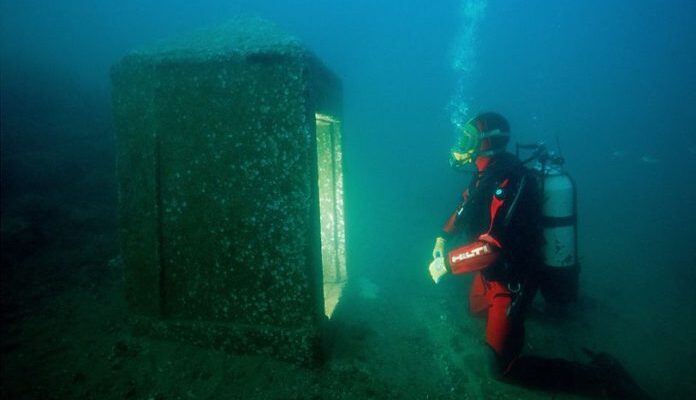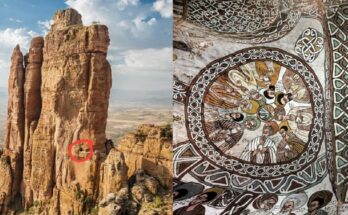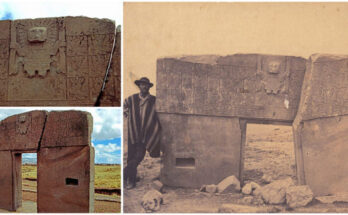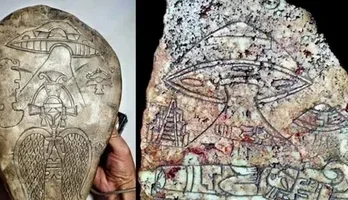Almost 1,200 years ago, the Mediterranean Sea engulfed the city of Heracleion off the coast of Egypt. Before it sank more than a thousand years ago, it was one of the most significant commercial hubs in the Mediterranean. Like the way the modern world sees the city of Atlantis, Heracleion was long thought to be a myth. But after doing significant underwater investigation in the present-day Aboukir Bay, underwater archaeologist Franck Goddio eventually located the submerged city in 2000.
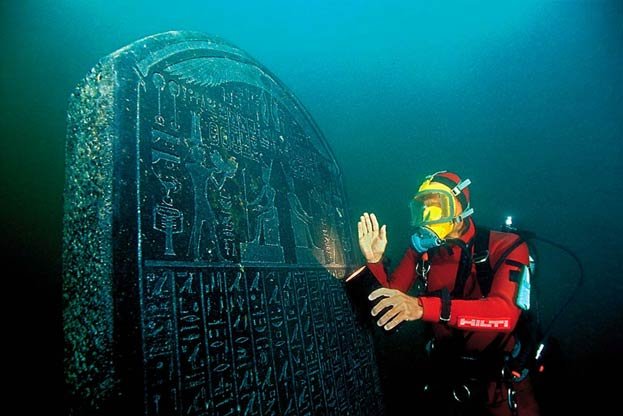
Heracleion had been reduced to only a few inscriptions and sentences in old texts by authors like Strabo and Diodorus before this recent discovery. When the mythical hero Heracles (also known as Herakles) first stepped foot in Egypt, a massive temple was built there, according to the Greek historian Herodotus (5th century BC). He also asserted that Paris and Helen of Troy paid the place a visit prior to the legendary Trojan War. The Greek explorer Strabo observed that the city of Heracleion was situated east of Canopus at the mouth of the River Nile, four centuries after Herodotus had traveled to Egypt.
THE SEEKER OF LOST CITIES DISCOVERS HERACLEION BY FRANCK GODDIO
A “pioneer of modern maritime archaeology,” Franck Goddio is a well-known underwater archaeologist. In order to discover and study underwater archaeological sites, Goddio established the European Institute for Underwater Archaeology (IEASM) in 1987. On underwater archaeological sites, IEASM is renowned for having established a methodical methodology using geophysical prospecting methods. The crew can find anomalies on the sea floor by moving over the region in parallel straight lines at regular intervals. These anomalies can then be investigated by divers or robots.
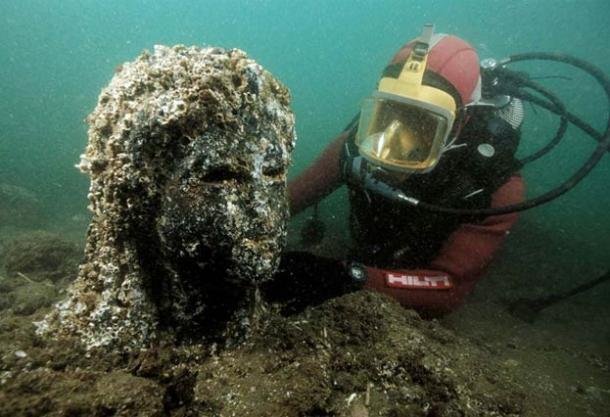
In order to locate Canopus, Thonis, and Heracleion—all of which were thought to have been submerged beneath the Mediterranean Sea—IEASM started mapping the area around the port of Alexandria in 1992. In 1996, they expanded their research to include Aboukir Bay at the request of the Egyptian government. They were able to comprehend the topography and conditions that led to the area’s gradual submersion thanks to this investigation. The group identified the areas of primary interest using data from historical documents. Aboukir Bay’s survey covered a field of study that was 11 by 15 kilometers (6.8 x 9.3 miles).
The mapping of the Aboukir Bay began in 1996 and took a long time. They made the discoveries of Canopus in 1999 and Heracleion in 2000. The remains of the old city are covered with sediment, which explains why the location of the buried city of Heracleion remained concealed in the Bay of Aboukir for so long. Sand and silt that have been deposited when the River Nile exits are what make up the top layer of the ocean floor. By using precise magnetic maps, the IEASM team was able to find remnants, which gave the proof required to finally identify Heracleion’s location.
DISCOVERING HERACLEION: A SUBMERGED LOST CITY?
Heracleion, now submerged under the waters of the Mediterranean Sea, was once situated 32 kilometers (20 miles) northeast of Alexandria in ancient Egypt at the mouth of the River Nile. The huge metropolis served as both a major port for trade with Greece and a place of worship where sailors would offer gifts to the gods. Politically, the city was important because pharaohs needed to go to the Amun Temple in order to become the supreme ruler.
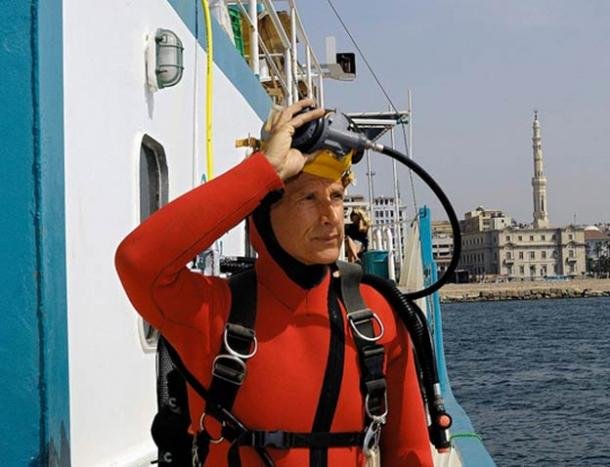
The ancient sunken city of Heracleion was discovered 10 meters (32.8 feet) below the surface and 6.5 kilometers (4 miles) from the present-day coastline in the western part of Aboukir Bay. Using cutting-edge technology and in cooperation with the Egyptian Supreme Council of Antiquities, IEASM was able to locate, map, and excavate the site.
Divers discovered the remarkably well-preserved city, with many of its riches remaining in tact after scraping away layers of sand and muck. They included the major Amun-Gerb temple, enormous pharaoh sculptures, several lesser statues of gods and goddesses, a sphinx, 64 ancient shipwrecks, 700 anchors, stone blocks with Greek and ancient Egyptian inscriptions, dozens of sarcophagi, gold coins, and bronze and stone weights.
HERACLEION’S REMAINS: RELICS OF A LOST PLANET
The underwater archaeologists found a massive statue of Hapi, the god responsible for the Nile’s inundation, that stood 5.4 meters (17.7 feet) tall among the ruins of the once-great metropolis. This was one of three enormous red granite statues from the fourth century BC that were found. A prehistoric stele with intricate and easily visible writing that was originally commissioned by Nectanebo I sometime between 378 and 362 BC was also found by the researchers in 2001.
Because Thonis was the name originally given to the city by the Egyptians while Heracleion was given by the ancient Greeks, it was possible for archaeologists to deduce from the writings on this old stele that Thonis and Heracleion were one and the same ancient city. The ancient city’s name was changed to Thonis-Heracleion at that point.
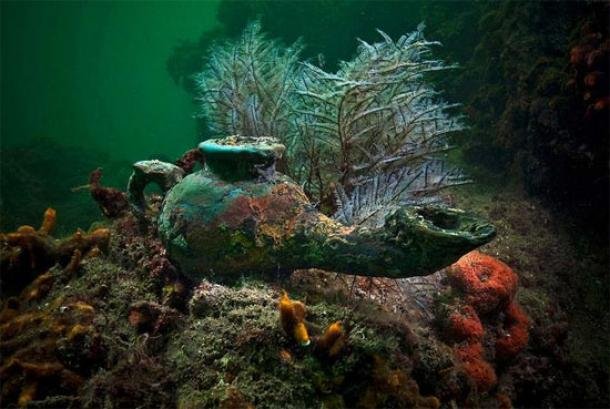
Many statues and buildings that once stood tall and majestic in the great city may be seen in the breathtaking photos taken throughout the finding and recovery operation. In one image, a statue of a Ptolemaic queen made in Greco-Egypt stands eerily on the ocean floor, surrounded only by silt and darkness, while in another, the visage of a famous Pharaoh can be seen peeking up out of the sand.
Franck Goddio stated that the goal of the IEASM underwater excavations was “to learn as much as we can by touching as little as we can and leaving it for future technology” in an interview with the BBC in 2015. Around 2% of the site had been excavated at that time. The same clay deposit from the Nile that has long concealed the ancient city also shields the relics on the ocean floor from salt water.
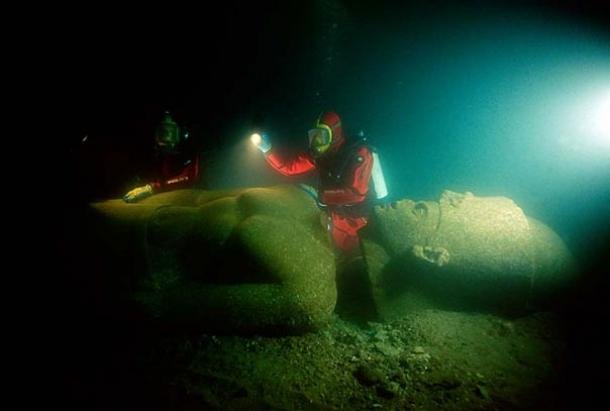
IEASM takes great care to restore and preserve artifacts that are taken from their secret underwater refuge on board their ships and in laboratories. This process has taken days in some cases, while it took two and a half years to complete the massive Hapi monument, for example.
KNOWING THE CAUSES OF CITIES SINKING INTO THE SEA
The metropolis, which was built on the Nile Delta, was considered to be breathtakingly beautiful and was crisscrossed by a massive network of canals. Heracleion, known as the Venice of the Nile, once held the title of the greatest harbor in the Mediterranean. The city apparently gradually lost importance as it disappeared under the water around the second half of the eighth century AD, according to excavations at the site. This raises the issue of why such an important city was destroyed.
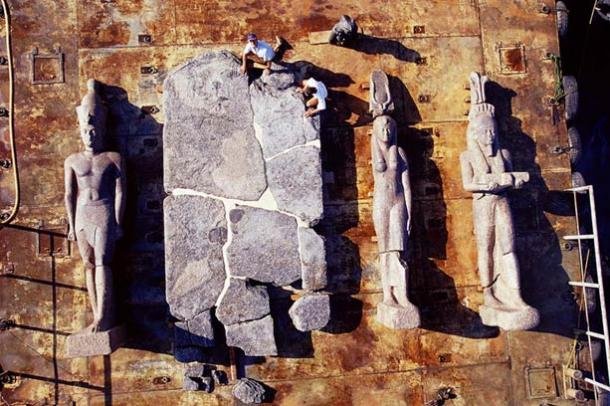
A number of geological phenomena and cataclysmic occurrences are the causes. Geological studies conducted by the IEASM in collaboration with other institutions have revealed that the slow subsistence, the rise in sea levels, and regional phenomena related to the composition of the soil in the region all had an impact on the southeastern Mediterranean basin, creating the conditions for cities like Heracleion to sink into the sea.
EGYPT’S LOST WORLDS EXHIBITS
The Egyptian government, which owns the artifacts, granted IEASM permission in 2005 to organize a traveling display of the finds. Egypt’s Sunken Treasures, the exhibition that resulted, traveled to significant cities in Germany, Spain, Italy, and Japan. A record 7,500 people each day, on average, visited the show at the Grand Palais in France.
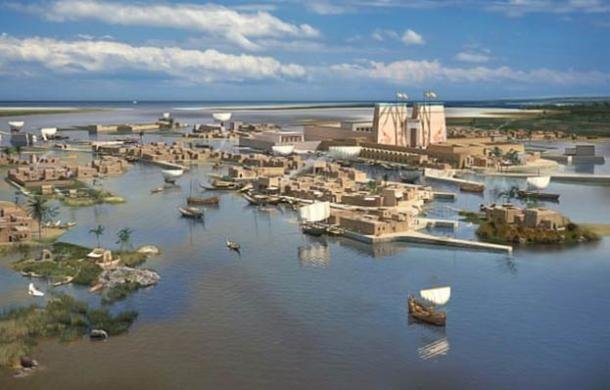
The British Museum and Franck Goddio collaborated to organize the first underwater archaeological exhibition in 2015, which featured over 200 objects found between 1996 and 2012 by the IEASM off the coast of Egypt. At that point, according to Goddio, they had only discovered 5% of the 3.5 sq. km.-sized ancient metropolis of Heracleion (1.35 miles).
Goddio reportedly said that while “this would be a tremendous project on land, it’s a task that will take hundreds of years under the sea and beneath the silt,” according to The Art Newspaper. Heracleion is around three times the size of Pompeii, a catastrophic site that archaeologists have been excavating for more than a century, so you can get an idea of the scope of this undertaking.
The Sunken Cities: Egypt’s Lost Worlds exhibition at the British Museum was also shown in 2015 at the Institut du Monde Arabe in Paris and the Saint Louis Art Museum in the United States. Before the items were sent back to Egypt in January 2021, they made their final stop at the Virginia Museum of Fine Arts.
The discovery of Heracleion prompts critical inquiries concerning the veracity of purported “mythical towns.” Who knows what other mythical sunken cities from the past will be discovered in the future if a city that was previously thought to be mythical can be found in the depths of the sea? Time will only tell.
